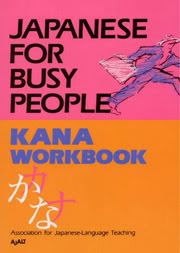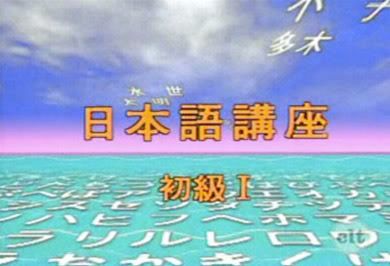Free printable Hiragana flash cards here.
Hmm, I should find a more permanent set of these...
Wednesday, May 30, 2007
すみません
Hey guys, I found a couple of resources for those of us using the Pimsleur course.
First, I found a pdf of student-made notes for the first thirty lessons. These are actually really good notes, written using both romaji and kana, with definitions and additional explanations. They would be absolutely perfect, except that they are the notes for a previous edition of Japanese I (possibly 1st edition, while we are using 3rd). It appears they changed quite a bit when they revised this series. None the less, many of the words and sentence constructions match well enough to make this useful. Contact me if you need these notes.
My second find was a blog. Here, the author has chronicled his study using Pimsleur, and it is our edition! However, it is in romaji only, and it appears the author abandoned the blog after lesson 21. Still, handy reference material for those early lessons.
It would be beautiful to find a set of notes for all ninety lessons, with romaji and kana, in our edition. That, I think, will only happen if I create it. Might be a good project.
First, I found a pdf of student-made notes for the first thirty lessons. These are actually really good notes, written using both romaji and kana, with definitions and additional explanations. They would be absolutely perfect, except that they are the notes for a previous edition of Japanese I (possibly 1st edition, while we are using 3rd). It appears they changed quite a bit when they revised this series. None the less, many of the words and sentence constructions match well enough to make this useful. Contact me if you need these notes.
My second find was a blog. Here, the author has chronicled his study using Pimsleur, and it is our edition! However, it is in romaji only, and it appears the author abandoned the blog after lesson 21. Still, handy reference material for those early lessons.
It would be beautiful to find a set of notes for all ninety lessons, with romaji and kana, in our edition. That, I think, will only happen if I create it. Might be a good project.
どくがく
おはようございます
There is nothing quite as nice as a lazy Wednesday morning. A chance to relax, read a little, practice, and update the blog. I figured for this one I'd talk about the resources that I'm using for my self-study.
Oh, this reminds me: Welcome, Javy. I hope this blog proves useful. Along with Javy, Tony, and Jenny, I have found two other people who wish to learn Japanese: Carla and Daphne. Hopefully, all of you who have shown interest in learning will continue to do so, for you will enrich the learning of every other person. You are all welcome authors to this blog.
Anyways, were was I? Oh, yes, source material.
Since I have been interested in learning Japanese since my mid-teens, I've gathered a helpful smathering of texts to help me on my way. Additionally, with my renewed (and hopefully pemanent) interest, I've aquired a number of other helpful texts and programs. These are listed below:

First, we have Pimsleur. This program is completely amazing. It is insanely great. I first tried these when I was seventeen or so, but I only had access to the introductory set which consisted of the first eight lessons. It is a testament to the Pimsleur learning method that after several years away from these lessons, I could still remember how to acurately pronounce the majority of what was taught therein. Several years later, I am fortunate to have access to these lessons, and they will serve as the initial backbone of my Japanese study. They are incredibly simple and fun to use, and require no more than 30 minutes a day(though I'd recommend going through each lesson twice in a day). My only complaint is the lack of written transcription to accompany the audio, although this was intentional on their part, and in fact the lessons do come with various helpful readings (both audio and text). Ultimately, the ninty lessons will come to an end, leaving me with the ability to correctly pronounce the most widely used and important Japanese, but without any further need to go back to the audio, except perhaps for the purpose of again listening to pronounciation. After this, I shall move on to text.
Not that I'm not knee-deep in text...


These are the books that I'm using to learn the hirgana and katakana, the kana syllabaries. Learning these symbols are essential for the continued learning of Japanese past the mere auditory level and should be learnt as soon as possible. They are also somewhat intimidating. It is very strange for me to be learning a whole new alphabet, but then again, it is the hiragana that began my interest in Japanese. These texts are all very useful; Remembering the Kana being the most highly regarded and informative of all, and therefore the center of my Kana study. The Japanese for Busy People Kana Workbook is mostly for practicing the actual writing of the kana, and will be used more frequently when I have moved on to the actual Japanese for Busy People textbook.
Oh, and then there's this:

I'm fairly sure this is the most obscure and at the same time greatest thing I have ever pulled from the depths of the internet. It's a collection of 52 episodes from a show called "Let's Learn Japanese!" and it's so amazingly 1985 that it may actually be a portal through time. Though aside from the cheesy hokeyness, it's actually a really good series. During the main skits, all the characters speak at a normal rate, which gives you a far better ear for the actual language. So far, the program has been very useful in conjunction with the Pimsleur method, as it focuses on far less (yet different) material during it's half hour lesson. They are cute, informative, and surprising funny. The television broadcast was supposed to be used in tandem with a textbook, but after some research, the book appears to have been lost in the neon burn of the 1980's.
These came with another television language course... which deserves a post of it's own, so I'll show those later.
Perhaps you can see my rather loose lesson plan: Listen to Pimsleur whilst studying Kana. At the same time, use Let's Learn Japanese as a supplimental and to get used to the speed of the language. When I've finished Pimsleur, I'll probably move on to using the Japanese For Busy People text and continue studying the kana. From there... well, there's no shortage of things to study, is there?
How about you? How will you plan your self-study?
There is nothing quite as nice as a lazy Wednesday morning. A chance to relax, read a little, practice, and update the blog. I figured for this one I'd talk about the resources that I'm using for my self-study.
Oh, this reminds me: Welcome, Javy. I hope this blog proves useful. Along with Javy, Tony, and Jenny, I have found two other people who wish to learn Japanese: Carla and Daphne. Hopefully, all of you who have shown interest in learning will continue to do so, for you will enrich the learning of every other person. You are all welcome authors to this blog.
Anyways, were was I? Oh, yes, source material.
Since I have been interested in learning Japanese since my mid-teens, I've gathered a helpful smathering of texts to help me on my way. Additionally, with my renewed (and hopefully pemanent) interest, I've aquired a number of other helpful texts and programs. These are listed below:

First, we have Pimsleur. This program is completely amazing. It is insanely great. I first tried these when I was seventeen or so, but I only had access to the introductory set which consisted of the first eight lessons. It is a testament to the Pimsleur learning method that after several years away from these lessons, I could still remember how to acurately pronounce the majority of what was taught therein. Several years later, I am fortunate to have access to these lessons, and they will serve as the initial backbone of my Japanese study. They are incredibly simple and fun to use, and require no more than 30 minutes a day(though I'd recommend going through each lesson twice in a day). My only complaint is the lack of written transcription to accompany the audio, although this was intentional on their part, and in fact the lessons do come with various helpful readings (both audio and text). Ultimately, the ninty lessons will come to an end, leaving me with the ability to correctly pronounce the most widely used and important Japanese, but without any further need to go back to the audio, except perhaps for the purpose of again listening to pronounciation. After this, I shall move on to text.
Not that I'm not knee-deep in text...


These are the books that I'm using to learn the hirgana and katakana, the kana syllabaries. Learning these symbols are essential for the continued learning of Japanese past the mere auditory level and should be learnt as soon as possible. They are also somewhat intimidating. It is very strange for me to be learning a whole new alphabet, but then again, it is the hiragana that began my interest in Japanese. These texts are all very useful; Remembering the Kana being the most highly regarded and informative of all, and therefore the center of my Kana study. The Japanese for Busy People Kana Workbook is mostly for practicing the actual writing of the kana, and will be used more frequently when I have moved on to the actual Japanese for Busy People textbook.
Oh, and then there's this:

I'm fairly sure this is the most obscure and at the same time greatest thing I have ever pulled from the depths of the internet. It's a collection of 52 episodes from a show called "Let's Learn Japanese!" and it's so amazingly 1985 that it may actually be a portal through time. Though aside from the cheesy hokeyness, it's actually a really good series. During the main skits, all the characters speak at a normal rate, which gives you a far better ear for the actual language. So far, the program has been very useful in conjunction with the Pimsleur method, as it focuses on far less (yet different) material during it's half hour lesson. They are cute, informative, and surprising funny. The television broadcast was supposed to be used in tandem with a textbook, but after some research, the book appears to have been lost in the neon burn of the 1980's.
These came with another television language course... which deserves a post of it's own, so I'll show those later.
Perhaps you can see my rather loose lesson plan: Listen to Pimsleur whilst studying Kana. At the same time, use Let's Learn Japanese as a supplimental and to get used to the speed of the language. When I've finished Pimsleur, I'll probably move on to using the Japanese For Busy People text and continue studying the kana. From there... well, there's no shortage of things to study, is there?
How about you? How will you plan your self-study?
Subscribe to:
Comments (Atom)
